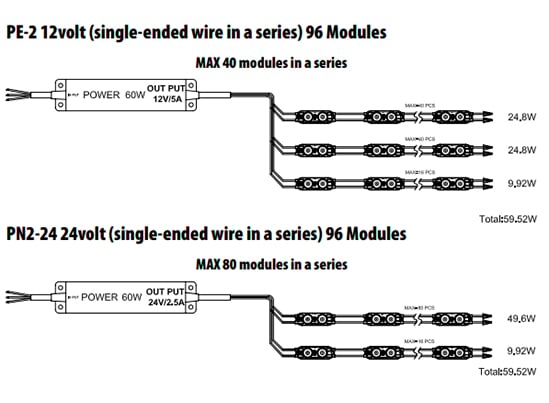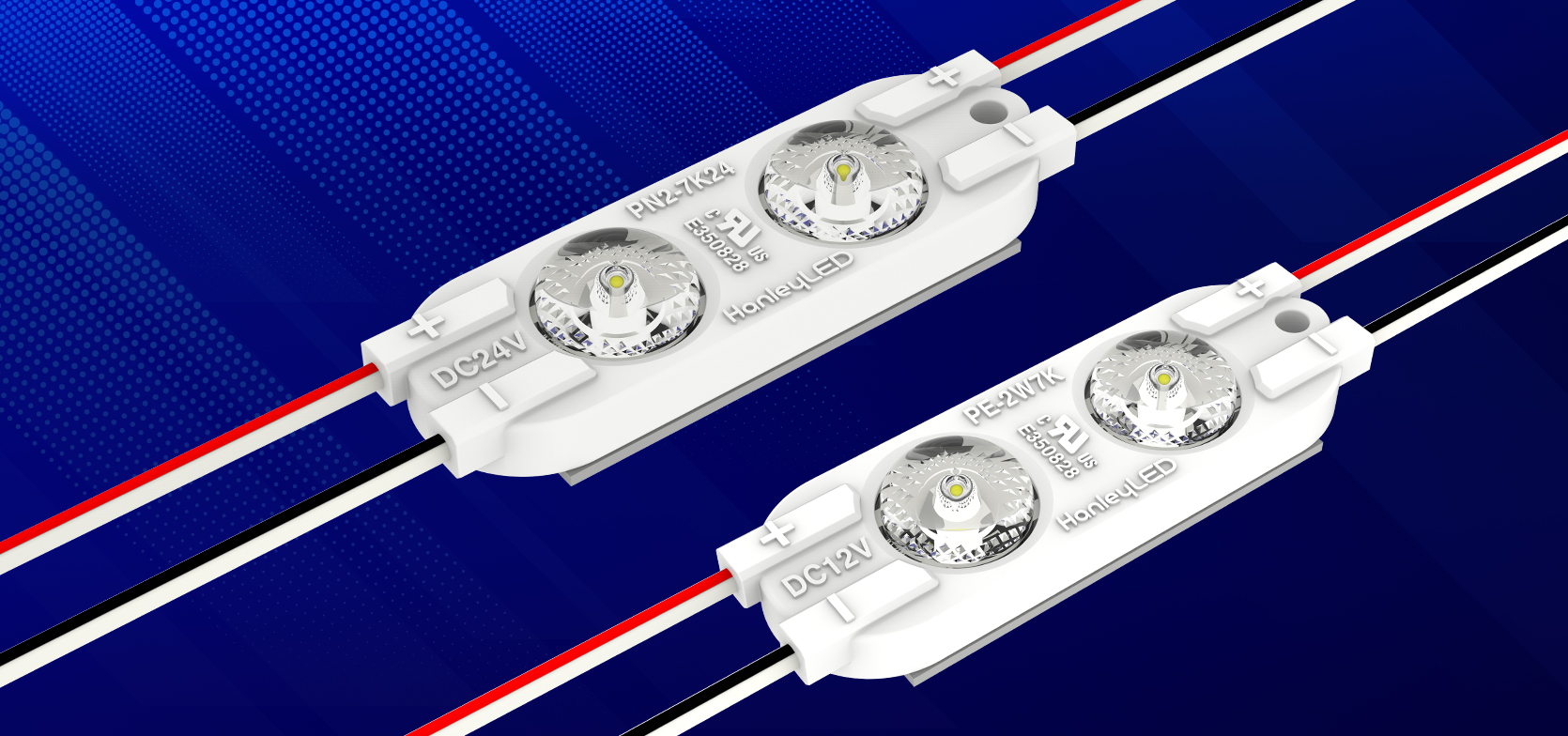12 v 24 Volt LEDs: Which are Better?
It’s the question that sign shops are asking when it comes to power supplies. Which voltage should I use and why? The simple answer is, either one. Although that may seem unsatisfying, it is the truth. The difference lies in the execution.
To tackle this topic, let’s first start with the common problem, line loss. Line loss is the reduction of the voltage and the current being delivered to your LEDs. This causes the LEDs further away from the power supply to be dimmer than the LEDs closer to it.
To combat this issue, the method of wiring a 12v power supply and a 24v power supply are different. A higher voltage power supply does not simply mean more modules. What is does mean, is that a single daisy chain can consist of more modules when the voltage is higher.
Simply put, a 24v power supply allows the same number of LEDs as a 12v, but the 24v can cascade more LEDs in a series off the end. 24 volt power supplies carry the current a greater distance before getting line loss or voltage drop.
Consider this….
Think of an iceberg floating down a river, voltage being the "size of the river" and the current being the energy inside the iceberg needed to power your LEDs.
Both the Mississippi River (24v) and the St. John's River in Florida (12v) can each carry the iceberg down river. But the Mississippi (24v) can carry that iceberg a greater distance, before it starts to melt. Whereas the iceberg in the St. John's River (12v) would start to melt in a shorter distance.




